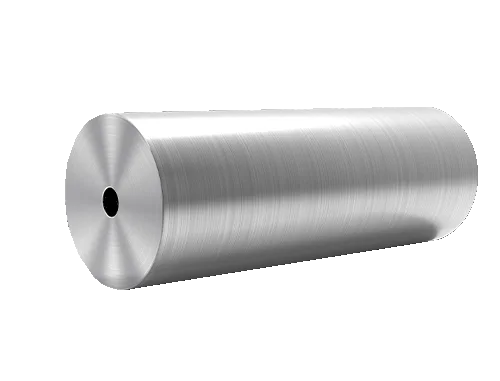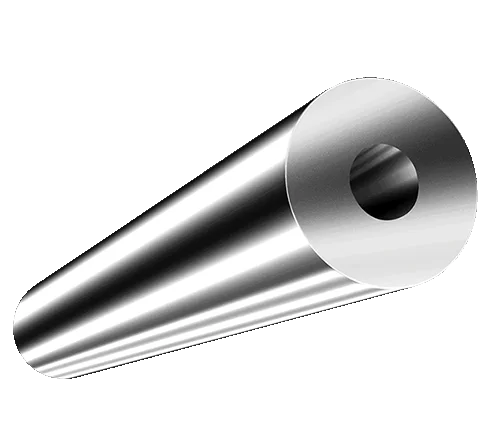Shandong Qilu lndustrial Co.,Ltd.
Enhancing Energy Efficiency with Metal Duct Work
Introduction

In the realm of HVAC systems, metal duct work stands as a cornerstone for efficient air distribution. With its durability, ease of installation, and compatibility with various environments, metal duct work plays a vital role in enhancing energy efficiency within residential, commercial, and industrial spaces. This blog delves into the significance of metal duct work in improving energy efficiency, exploring its benefits, installation considerations, maintenance, and more.
The Role of Metal Duct Work in Energy Efficiency
Metal ductwork forms the circulatory system of HVAC setups, efficiently transporting conditioned air to different parts of a building. Its rigid structure ensures minimal air leakage, preventing energy wastage. By optimizing airflow, metal ductwork contributes to maintaining consistent temperatures throughout a space, thereby reducing the load on heating and cooling systems.
Benefits of Metal Duct Work
- Durability: Metal duct work, typically constructed from galvanized steel or aluminum, offers longevity, resisting corrosion and damage better than alternative materials.
- Improved Air Quality: Properly installed metal duct work helps in reducing dust, allergens, and contaminants in the air, promoting a healthier indoor environment.
- Cost-Effectiveness: Though initially pricier than some alternatives, metal duct work’s durability and energy efficiency lead to long-term cost savings through reduced maintenance and energy bills.
- Fire Resistance: Inherently fire-resistant, metal duct work enhances overall safety within a building by containing fires and preventing their spread through ventilation systems.
Installation Considerations
Proper installation is critical for maximizing the benefits of metal duct work. Factors such as sizing, layout design, and sealing techniques significantly impact efficiency. Employing skilled professionals ensures precise installation, minimizing air leakage and optimizing system performance. Additionally, adhering to industry standards and regulations guarantees safety and longevity.
Maintenance and Care
Regular maintenance is essential for preserving the efficiency and integrity of metal duct work systems. Inspections should be conducted periodically to identify and address any signs of wear, damage, or blockages. Cleaning ducts removes accumulated debris, preventing airflow restrictions and maintaining optimal system performance. Sealing leaks promptly prevents energy loss and ensures consistent indoor comfort.
Enhancing Efficiency with Insulation
While metal ductwork offers inherent advantages, supplementing it with proper insulation further enhances energy efficiency. Insulated ducts minimize heat gain or loss, improving system performance and reducing the workload on HVAC equipment. Additionally, insulation helps prevent condensation buildup, mitigating the risk of mold growth and maintaining indoor air quality.
Comparison of Metal Duct work Materials

| Material | Pros | Cons |
|---|---|---|
| Galvanized Steel | – High durability <br> – Fire resistance <br> – Cost-effective | – Susceptible to corrosion <br> – Heavy |
| Aluminum | – Lightweight <br> – Corrosion-resistant <br> – Easy to install | – Higher initial cost <br> – Less rigid than steel |
| Stainless Steel | – Superior corrosion resistance <br> – Long lifespan | – Higher cost <br> – Limited availability in some regions |
Conclusion
Metal duct work serves as a cornerstone for energy-efficient HVAC systems, offering durability, reliability, and performance. By optimizing airflow and minimizing energy loss, metal ductwork contributes to lower operating costs, improved indoor comfort, and environmental sustainability. Investing in quality metal ductwork and ensuring proper installation and maintenance are crucial steps towards enhancing energy efficiency in residential, commercial, and industrial buildings.
FAQ
Q: Is metal ductwork suitable for all environments?
A: While metal ductwork is highly versatile, environments with high humidity or corrosive substances may require additional protection or alternative materials.
Q: How often should metal ductwork be inspected?
A: It is recommended to conduct inspections at least once a year, preferably before the start of each heating or cooling season.
Q: Can existing ductwork be upgraded to metal?
A: Yes, existing ductwork can often be replaced or retrofitted with metal ductwork to improve efficiency and durability.
Q: What are the typical lifespan and warranty of metal ductwork?
A: Metal ductwork can last upwards of 20 years or more with proper maintenance. Warranties vary depending on the manufacturer but often cover defects in materials and workmanship for a specified period.
Q: How much energy savings can be expected by using metal ductwork?
A: Energy savings depend on various factors such as the efficiency of the HVAC system, the quality of installation, and the building’s design. However, studies have shown that properly installed metal ductwork can reduce energy consumption by up to 30%.
